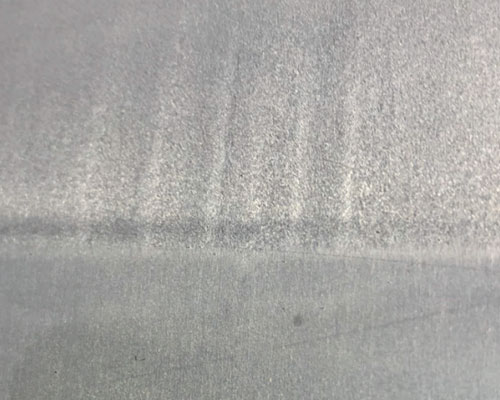The segregation stripes on the surface of the cast-rolled plate are in the form of bands, running through the full length of the strip, and the segregation areas are poorly reflective and darker, and become black after being etched by a high concentration of acid. It can be seen from the analysis of the structure and the chemical composition that the surface segregation of the cast-rolled plate and the segregation tumor on the surface of the continuously cast ingot are the same thing, which is anti-segregation. This local melt first contacts the surface of the cast-rolling roll to form a condensed shell , The heat of the melts on both sides keeps precipitating from here, and the crystal grains on both sides of the crustal zone gradually grow and extend into the hot melt on both sides, until the melts on both sides and the casting roll surface contact, the normal structure is formed.
Once the segregation streaks appear somewhere during the casting-rolling process, they will continue until the end of the casting-rolling, without interruption in the middle, and the position does not move. It is not difficult to infer that the segregation streaks on the surface of the cast-rolled sheet are related to the special structure of the casting lips And this special structure is produced during the use of the cast lip mouth. It is only possible when this part of the cast lip mouth falls off for some reason during use, such as when the temperature is too low or the casting When the speed is too slow, a certain part of the cast-rolled sheet may stick to the casting lip mouth, or aluminum chips and foreign objects may be drawn in with the rotation of the roller and the casting lip mouth may be pulled out. This kind of streak defect cannot be eliminated due to the casting-rolling production process and cold-rolling post-processing, so the board can only be stopped and re-upped.

Segregation Stripes Treatment Measures
(1) Be careful when the caster tip and nozzle during processing, installation, and use.
(2) Properly increase the temperature of the front box, and the casting and rolling speed should not be too low to prevent the damage of casting tips.
(3) Control the gap between the casting lip and the roll, and control the liquid level in the front box to prevent the aluminum liquid and the casting lip from sticking due to the rise of the liquid level, and the casting lip is damaged when the strip is rolled out during the rolling process.

